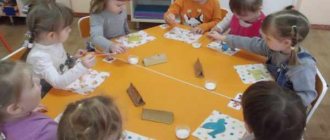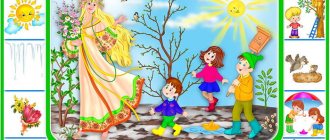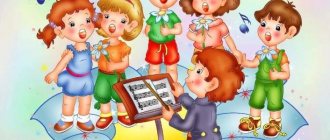“Emotions” is a fun game for the emotional development of preschoolers
The didactic game “Emotions” introduces kindergarteners to different feelings, expressing them through changes in facial expressions and intonation, body language and body movements. Emotional development is the most important area of work with preschoolers. It is important to teach children to react correctly to events, to be aware of their own feelings and experiences, to share them, and to treat the emotions of others with attention and understanding.
DIY didactic game “Guess the Emotions”
Muminat Feyzullaeva
Do-it-yourself didactic game “Guess the emotions”
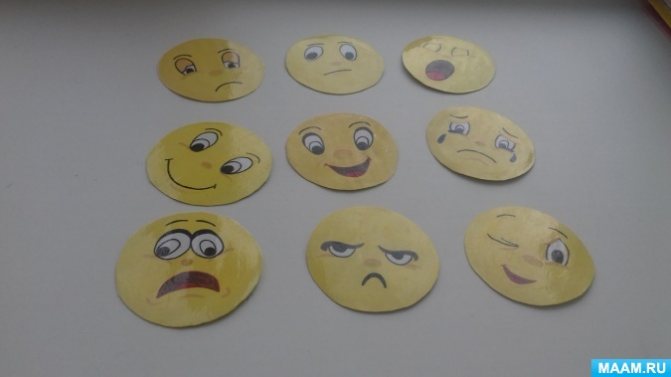
Goals: to introduce children to basic emotions : joy, sadness, anger, fear; to develop in children the ability to recognize the emotional manifestations of other people based on various signs (facial expressions, pantomimes)
;
enrich and activate children's vocabulary with words denoting various emotions , feelings, moods.
The game is made with your own hands , in the form of emoticons. To begin with, I drew the necessary emotions
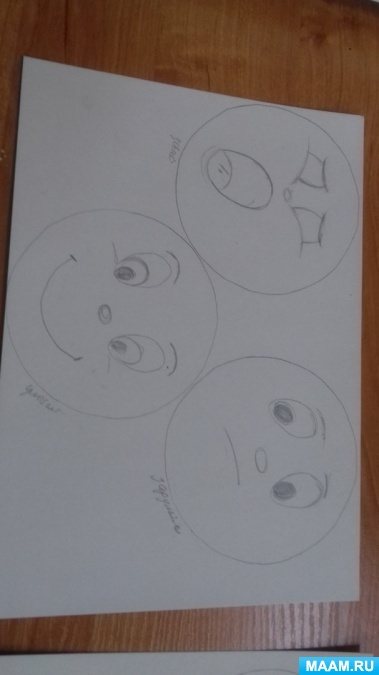
Then I cut out circles with emotions
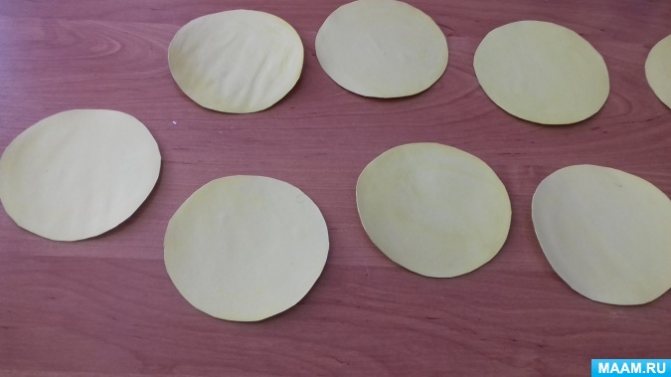
Then I painted both sides with gouache.
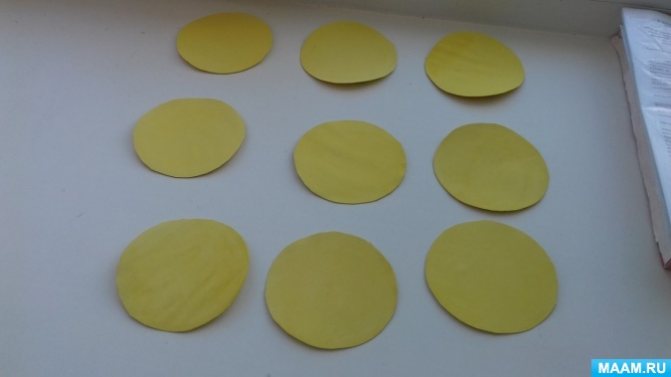
Next, I outlined our emotions with felt-tip pens and completed the necessary details, as shown in the next photo.
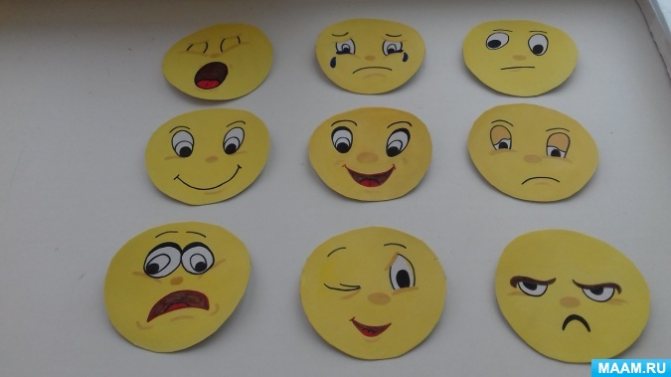
Well, at the end I laminated it with tape on both sides.
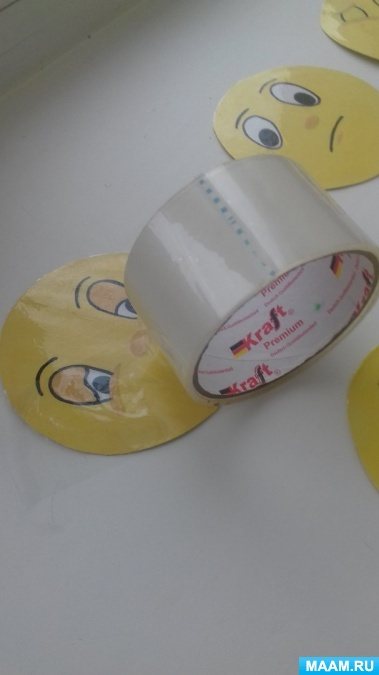
And voila, our emoticons are ready!
Option 1. Invite the children to take turns taking any emoticon without showing it to the others. The child’s task is to recognize the emotional state and depict it using facial expressions, pantomimes and vocal intonations. The rest of the children - the audience - must guess what emotions the child is portraying and what is happening in his mini-scene.
Option 2. To study the intensity of emotions , the task can be complicated by asking one child to depict, for example, joy, and the other - delight (irritation - rage, sadness - grief)
.
The task of the other children is to identify these emotions .
Do-it-yourself didactic game “Professions” If you have a color printer, it is not at all difficult for a teacher to make a didactic printed board game on their own. As an example. Didactic game “Make a portrait” with your own hands A fun, exciting game of drawing up portraits will certainly interest children. After all, there can be a great many portraits! Big. Do-it-yourself didactic game “Find a web for a spider” for children 3-4 years old Didactic game with your own hands “Find a web for a spider” for children 3-4 years old. Games are an essential element of a child’s development and upbringing. Do-it-yourself didactic game “Pick buttons for a shirt” GOAL: Development of fine motor skills of the hands, memory, attention. Consolidating knowledge of colors. Learn to alternate colors in accordance with the teacher’s example, teach. Do-it-yourself didactic game “Guess the bird by its silhouette” Children of the preparatory group are happy to participate in making didactic games with their own hands. First I pre-printed it. Do-it-yourself didactic games “Guess by touch” Dear colleagues, I present to your attention educational games that you can make with your own hands for preschool children. Do-it-yourself didactic game “Tic Tac Toe” To entertain a child, adults sometimes spend impressive sums buying all kinds of toys - both ordinary and computer ones. But if. Didactic game “Do-it-yourself imitation laces” Much has been said and written about the benefits of games aimed at developing fine motor skills. The better and more often your baby plays such games, the sooner.
Source
Didactic game "Emotions"
The activity is useful for preschoolers and primary schoolchildren. It is suitable for both individual and group work in kindergarten, and can be used for home schooling.
The purpose of the didactic game “Emotions” is to teach the ability to express and distinguish between human feelings and to respond correctly to them.

Tasks:
For the didactic game “Emotions” for children, you need to cut out paper blanks: two images of a head (a boy and a girl) without parts of the face. A set of facial parts depicting different feelings must be made separately.
Progress of the lesson
There are several options for the didactic game “Emotions” for preschoolers. For a simple lesson, the teacher lays out pictures on the table. Children select different lips, noses, eyes for the boy and girl depicted until they achieve a certain emotional state. Participants explain what emotion they managed to portray, show it on their face (if desired, supplement it with gestures and phrases).
The game can be played for a couple of participants. Children depict certain feelings on paper faces, then come up with dialogue from the created characters, and reproduce it with appropriate gestures and intonation.
For younger preschoolers, a simple game “Guess the Emotion” is suitable. Each of the participants takes turns depicting a certain emotional state: fun, sadness, boredom, anger, dissatisfaction, resentment, fear, curiosity, fatigue, confusion, love and others. Other players must guess what kind of feeling their friend is trying to portray and name it.

